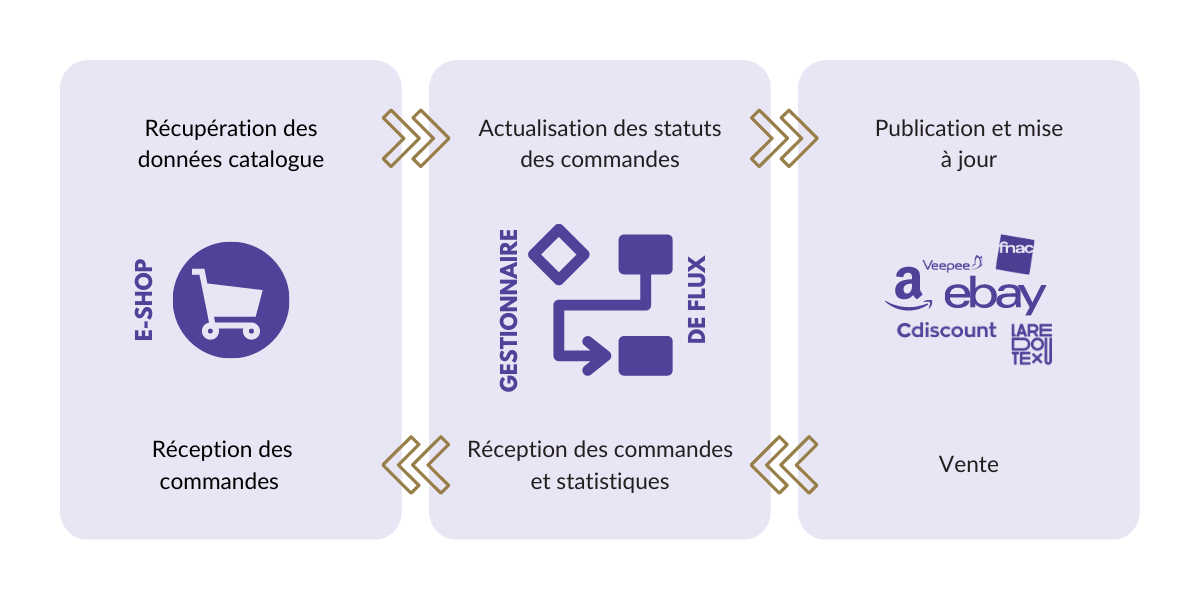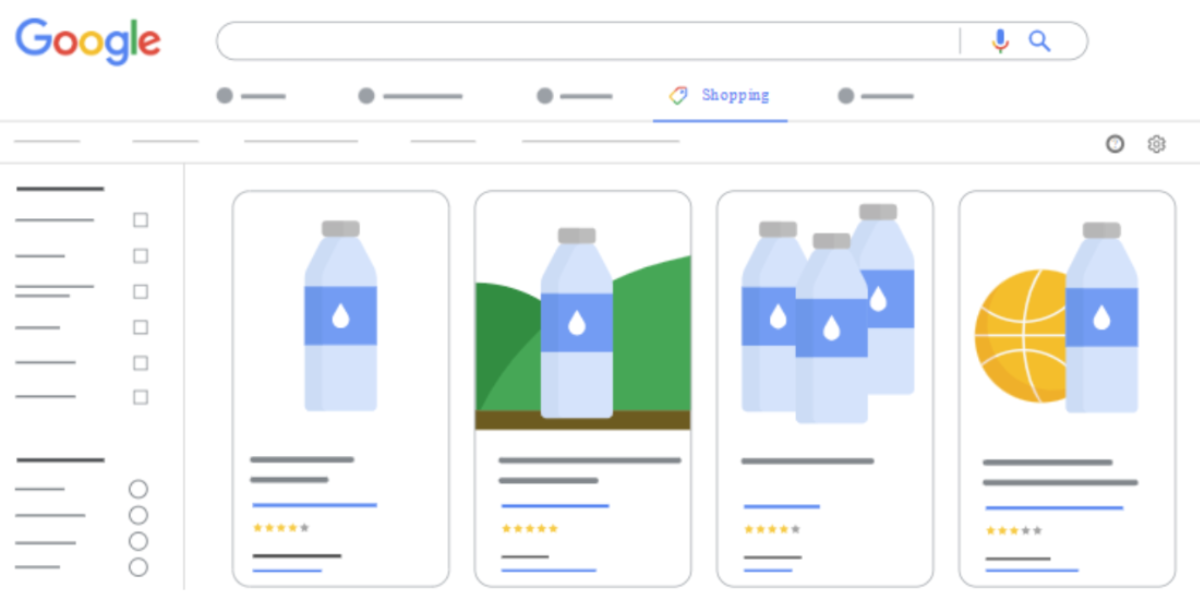As an e-tailer, you’re no doubt aware of the importance of offering your products through a variety of online sales channels. But managing all these platforms can quickly become complex and tedious. That’s where a product feed comes in! In this article, we’ll explain why using a product feed is essential for e-tailers, and the benefits it can bring to your business.
What is a product feed?
Before talking about the benefits of a product feed, it’s important to understand what the term means exactly. A product feed is a tool for centralising and managing your product data. It allows you to create a data feed that can be sent to different online sales platforms, such as Google Shopping, Amazon or Facebook Ads. So you can manage all your ads in one place, without having to connect to each platform individually.

What are the advantages of a product feed?
Advantage #1 – Increased product visibility
One of the most important advantages of a product feed is that it allows you to offer your products on hundreds of online sales channels. This means you can reach a wider audience and increase the visibility of your products. By using a product feed, you can easily publish your products on online sales platforms such as Google Shopping, Amazon, Facebook Ads, Instagram Shopping and many others.

Advantage #2 – Automated updating of product data
When you manage several online sales channels, it can be difficult to keep all your product data up to date. With a product feed, updates are automatic. You can easily add, modify or delete products, and changes are immediately reflected on all platforms. This saves you from having to manually update each advert, which can be very time-consuming.
Benefit #3 – Real-time stock synchronisation
When you manage several online sales channels, it’s also important to maintain consistent stock on each platform. This is where a product feed can be very useful. It allows you to synchronise your stock in real time across all platforms. So if you sell a product on Amazon, for example, the stock will automatically be updated on all the other online sales platforms.
Advantage #4 – Optimising your natural referencing
By using a product feed, you can also optimise your search engine optimisation (SEO) by improving the quality and accuracy of your product data. Search engines such as Google attach great importance to high-quality product data. With a product feed, you can ensure that all your product information is correct and up-to-date, which can help improve your ranking in search results.
Benefit #5 – Reduced errors
Finally, when you manage several online sales channels, it’s easy to make mistakes such as duplicating products or displaying incorrect prices. A product feed can help you reduce these errors by centralising all your product data. You can easily check and correct any errors in a single platform.
In practical terms, how do we go about it?
Integrating a product feed may seem tedious, but with the right steps it can be done quite easily. Here are some key steps for integrating a product feed into your business:
Step #1 – Export your product data
The first step in integrating a product feed is to export all your product data from your website or inventory management system. The data generally includes product information such as title, description, images, prices and stocks.
To export your product data, you can use different methods depending on your e-commerce platform or inventory management system. Here are some common options:
- Export from your e-commerce platform: If you use an e-commerce platform such as Shopify, WooCommerce or Magento, you can export your product data directly from the back-end of your site. In most cases, you can export your product data in CSV or XML format. To export your product data, go to your e-commerce platform back-end and look for the “Export” or “Export product data” option. Follow the instructions to download the data file.
- Use a plugin to export your product data: If you use an e-commerce platform that does not have a product data export function, you can use a plugin to export your product data. There are many plugins available for different e-commerce platforms, such as Product CSV Import Export for WooCommerce or Product Exporter for Magento. These plugins allow you to export your product data in just a few clicks.
Step #2 – Format the product data
Once you have exported your product data, you need to format it to make it compatible with your product feed. The standard format for product data is XML or CSV. In most cases, the product feed format is unified; all platforms use the same file structure.
Step #3 – Connect your product feed to your sales channels
The next step is to connect your product feed to your various sales channels, such as your online shop, your Amazon or eBay account, etc. This connection will enable your product feed to retrieve your product information and update it automatically on all your sales channels.
Step #4 – Configure the flow rules
Flow rules are rules you can define for each online sales channel to determine how your product information should be displayed. Flow rules include elements such as titles, descriptions, images, prices and stocks. You can configure these rules in your product feed to ensure that your products are displayed correctly on each sales channel.
Step #5 – Test and publish your products
Once you’ve set up the flow rules, it’s important to test the integration process to make sure everything is working properly. Check that all your product information is correct and up to date before publishing them on all sales channels. Your product feed will automatically update your product information on all sales channels in real time.
Conclusion
To sum up, using a product feed can offer a number of advantages to e-tailers.
It can help you reach a wider audience by publishing your products on hundreds of online sales channels, centralise your orders, synchronise your stocks in real time and automate your SEA campaigns. By using a product feed, you can also improve the quality of your product data, reduce errors and track the performance of your products across all online sales platforms.
So if you’re looking to improve the management of your online business, it’s time to consider using a product feed!




